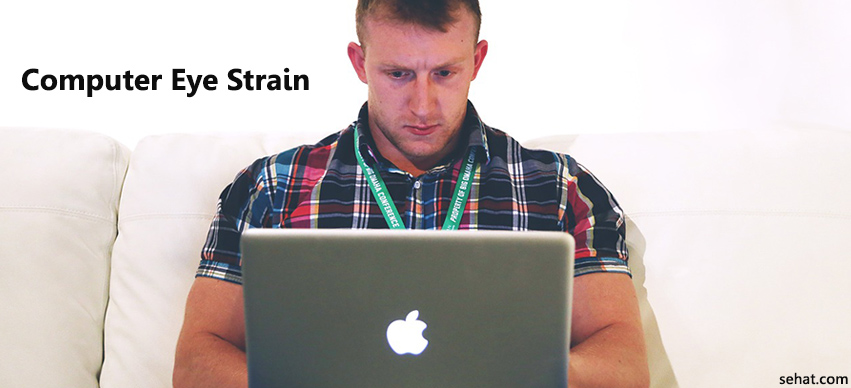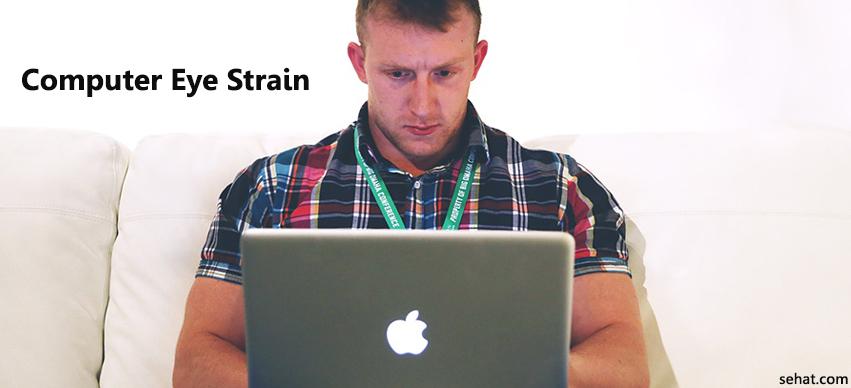Microplastics in Humans: Understanding the Risks and How to ..
8 Min Read


As per a recent survey, 99 people out of every 100 are using computers every day. There are 7,519,028,970 people around the world using the Internet on their computers, mobiles, and tablets every day.We are so dependent on the computer that we have given up on talking face to face, practically everything is done online today.
Most of us enjoy such ease of access provided using the Internet on the computer that it has increased our laziness, where we don’t even use our hands to shut off or put on lights at home or work. Continuous and prolonged use of computers may help us save effort and time, yet it has brought on a list of computer-related health issues we have never thought of before.
Not many know how extensive the damage caused by computers can be. Even though we know some of the ill effects, we still can’t give up the use of computers today.Computer eye strain or Digital eye strain, in general,is one of the major complaints with those regularly using computers at work constantly and additionally having their eyes exposed to phone or tablet screens.
Here are 10 easy steps you can take to reduce your risk of computer eye strain or Computer Vision Syndrome (CVS).
Excessively bright outdoor or indoor lights, while working on the computer, can cause eyestrain. When it comes to outdoor lights – translucent drapes, shades or blinds are all very simple solutionsthat can be used to allow light to come through partially without affecting your eyes. Low-intensity bulbs and fluorescent tubes can be used to make indoor lighting more eye friendly. Many users report feeling better by using floor lamps and table lamps instead of overhead lights as they affect the eyes in a much less direct manner.
Glarei.e. reflection of external light ofthe computer screen is one of the most common reasons for computer eye strain. While a simple anti-glare screen on the monitor can go a long way in stopping this, a computer hood can be used when the glare is being caused by outside light that cannot be stopped.
Old-fashioned tube-style monitors or CRT monitors have a noticeable "flicker" of images, which is a major cause of computer eye strain. Liquid crystal displays (LCD) and Light Emitting Diodes (LED), like those on laptops,are the latest in display technology and are easier on the eyes and come equipped with an anti-reflective surface.
Adjusting the display settings such as brightness, text size, colour temperature etc.of your computer screen can help to reduce eye strain and fatigue. While there isn’t one setting that will work for all, you could experiment with a few changes and find the one that is best suited for your eyes.
Blinking, moistens the eyes and prevents dryness and is thus extremely important for the eyes. However, per studies, while using computers most people hardly blink. It is only about one-third as often as they normally do with many blinks performed as only partial lid closures. Deliberately blinking for about 10-15 times once every 20-30 minutes, is a simple way to make sure the eyes remain moist and fresh.
Another cause of computer eyestrain is focusing fatiguei.e. when your eyes' focusing ability gets "locked up" (a condition called accommodative spasm) after prolonged computer work.Following are two exercises that are highly efficient in treating this.
Do these 10 times. Performing these while blinking will give the dual benefit of increased focus and moistening of the eyes.
Computer vision syndrome,as well as issues such as the neck, back and shoulder pain, can be handled quite simply by taking frequent breaks during your computer work day. And ideal break schedule would be – Two 15-minutes breaks during the day and as many as four 5-minute mini breaks. During your computer breaks, try doing the exercise mentioned above as well as a few good stretches to keep pain and stiffness at bay.
Looking back and forth between a printed page and the computer screen can also cause eyestrain. The reasons for this are sudden and frequent changes in lightings, postural errors while working and the unbalanced distance between the object and the eyes. This can be corrected by making simple changes at your workstation. Try to place printed papers on a stand next to the monitor, have a table lamp which has soft lights, adjust the chair and table height so that you don’t have to strain too much.
Normal eyeglasses don’t have the additional features and contacts can dry out faster during sustained computer work. So, those who use glasses or lenses can benefit immensely from prescription approved customized computer glasses and lenses. The Anti-Reflective coating on these specially made glasses helpsto control glare and reflections thereby greatly reducing the strain on the eyes while the specially adjusted focal length and glass quality help you focus better.
While you may follow all the points mentioned above, having a routine eye exam is one of the most important things you can do to prevent or treat computer-related vision problems. Discussing things such as work hours, screen hours, lighting, any discomfort etc. with the doctor will help you identify problems early, thereby giving you a chance to make changes.
Visiting a doctor if your eye strain persists even after following the tips above, is important. At sehat, find the best eye doctors in Hyderabad or the city you live in.